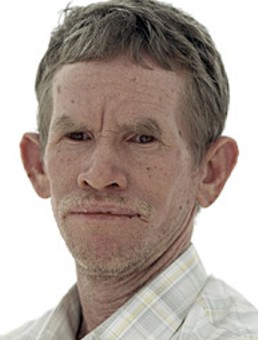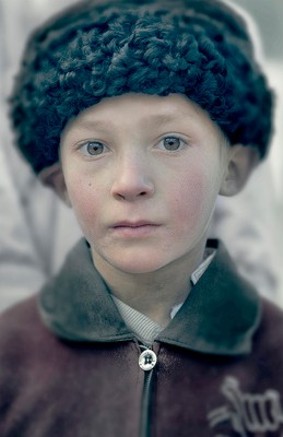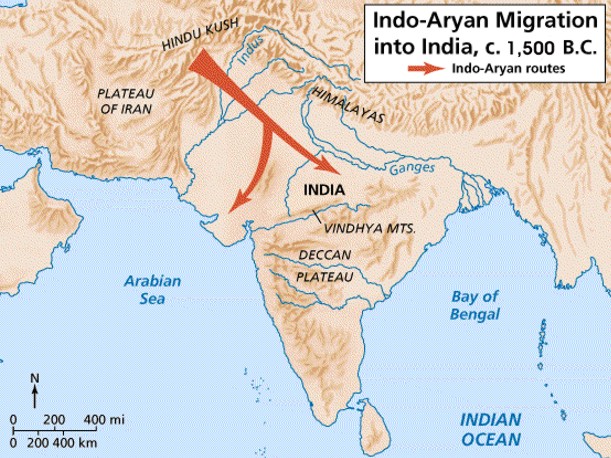When last we left the Indus Valley, Civilization there had ceased at about 1,800 and 1,700 B.C. Perhaps because of some unknown natural disaster. If rainfall declined in the Indus region between 1800 and 1700 B.C, then around 1500 B.C. it increased again, making the Indus Plain better able to support life. It was between 1500 and 1200 B.C. that the Dravidian Albinos who had originally migrated from Africa into India and then continued North into Central Asia, to escape the Burning Sunshine found at lower latitudes returned to India.
Dravidian Albinos




No one knows why the Albinos left Central Asia; perhaps it was some natural disaster, or perhaps they had overpopulated the sparse land and now found it difficult to acquire enough food there. Whatever the cause, within the next 2,000 years (1,500 B.C. to 500 A.D.) ALL the millions of Albinos (Caucasians) would abandon Central Asia and move to India and Europe. Today the Uyghurs, a Turkic ethnic group, who live primarily in the Xinjiang Uyghur Autonomous Region, in the People's Republic of China, are the only Caucasians still living in Eastern and Central Asia. (Many are actually now mixed-race).
The Uyghurs of Xinjiang Uyghur China



It is also not known why they would hazard a return to lands that they originally found inhospitable because of the intense Sunshine. Perhaps over the tens-of-thousands of years that they spent in Central Asia, they were able to acquire a "Fixed" degree of Melanination through crossbreeding with the Blacks in China and Eastern Europe who surrounded them (see the Eastern Europe and China pages).
Central Asian Plains

Unlike their normally pigmented brethren who stayed behind in India, they had not evolved into a civilized people. They had not developed a written language, technology or cities. They returned to India as an illiterate, pastoral people now called Aryans/Arians. They migrated from the steppe lands of Central Asia through what is now Afghanistan, down through the Khyber Pass and onto the sparsely populated Indus Plain (The Khyber Pass, altitude: 1,070 m or 3,510 ft. is a mountain pass that links Pakistan and Afghanistan).

The Aryan/Arian Invasion
Indians, particularly Hindus have always been rather schizoid on the subject of the Aryan Invasion theory. Many argue that the Aryans came as migrants, not as invaders. And of course, because Hindus are mainly the Mulattoes of Dravidians and Aryans, they feel a loyalty to both.
But here, the fact of the Aryan Invasion, whether it be migration or invasion, is of no consequence to us. Our interest is in establishing that Aryans and Dravidians, and by extension Europeans and Dravidians, are the same people genetically. This is possible because even thought their respective skin colors are very different; that difference is attributable to Albinism, a genetic defect with does not effect the general genetic make-up of those so afflicted. Thus the Albino child of a Black Dravidian father with Y-dna R1 will still, and also, have Y-dna R1 too. It's just that the child will also have a defective "P" gene, which robs the body of the ability to make sufficient melanin to protect itself from the Sun. As is the case with these Bhatti Albinos of Pakistan below, (note their pigmented family members in the back).

(Also note that these Indian Albinos match perfectly The Roman historian Cornelius Tacitus (56-118 A.D.) description of the Germanics in Europe).
Quote: from his book: Germany Book 1.
4. For my own part, I agree with those who think that the tribes of Germany are free from all taint of intermarriages with foreign nations, and that they appear as a distinct, unmixed race, like none but themselves. Hence, too, the same physical peculiarities throughout so vast a population. All have fierce blue eyes, red hair, huge frames, fit only for a sudden exertion. They are less able to bear laborious work. Heat and thirst they cannot in the least endure; to cold and hunger their climate and their soil inure them.
Many scientific studies have been done proving that there is little genetic distinction between Dravidians and Aryans, and by extension Europeans. And also proving that Aryans, and by extension Europeans, were White (Albinos), when they left Africa. Debunking the nonsense that they turned White in Europe.
Dravidian Albinos




No one knows why the Albinos left Central Asia; perhaps it was some natural disaster, or perhaps they had overpopulated the sparse land and now found it difficult to acquire enough food there. Whatever the cause, within the next 2,000 years (1,500 B.C. to 500 A.D.) ALL the millions of Albinos (Caucasians) would abandon Central Asia and move to India and Europe. Today the Uyghurs, a Turkic ethnic group, who live primarily in the Xinjiang Uyghur Autonomous Region, in the People's Republic of China, are the only Caucasians still living in Eastern and Central Asia. (Many are actually now mixed-race).
The Uyghurs of Xinjiang Uyghur China



It is also not known why they would hazard a return to lands that they originally found inhospitable because of the intense Sunshine. Perhaps over the tens-of-thousands of years that they spent in Central Asia, they were able to acquire a "Fixed" degree of Melanination through crossbreeding with the Blacks in China and Eastern Europe who surrounded them (see the Eastern Europe and China pages).
Central Asian Plains

Unlike their normally pigmented brethren who stayed behind in India, they had not evolved into a civilized people. They had not developed a written language, technology or cities. They returned to India as an illiterate, pastoral people now called Aryans/Arians. They migrated from the steppe lands of Central Asia through what is now Afghanistan, down through the Khyber Pass and onto the sparsely populated Indus Plain (The Khyber Pass, altitude: 1,070 m or 3,510 ft. is a mountain pass that links Pakistan and Afghanistan).

The Aryan/Arian Invasion
Indians, particularly Hindus have always been rather schizoid on the subject of the Aryan Invasion theory. Many argue that the Aryans came as migrants, not as invaders. And of course, because Hindus are mainly the Mulattoes of Dravidians and Aryans, they feel a loyalty to both.
But here, the fact of the Aryan Invasion, whether it be migration or invasion, is of no consequence to us. Our interest is in establishing that Aryans and Dravidians, and by extension Europeans and Dravidians, are the same people genetically. This is possible because even thought their respective skin colors are very different; that difference is attributable to Albinism, a genetic defect with does not effect the general genetic make-up of those so afflicted. Thus the Albino child of a Black Dravidian father with Y-dna R1 will still, and also, have Y-dna R1 too. It's just that the child will also have a defective "P" gene, which robs the body of the ability to make sufficient melanin to protect itself from the Sun. As is the case with these Bhatti Albinos of Pakistan below, (note their pigmented family members in the back).

(Also note that these Indian Albinos match perfectly The Roman historian Cornelius Tacitus (56-118 A.D.) description of the Germanics in Europe).
Quote: from his book: Germany Book 1.
4. For my own part, I agree with those who think that the tribes of Germany are free from all taint of intermarriages with foreign nations, and that they appear as a distinct, unmixed race, like none but themselves. Hence, too, the same physical peculiarities throughout so vast a population. All have fierce blue eyes, red hair, huge frames, fit only for a sudden exertion. They are less able to bear laborious work. Heat and thirst they cannot in the least endure; to cold and hunger their climate and their soil inure them.
Many scientific studies have been done proving that there is little genetic distinction between Dravidians and Aryans, and by extension Europeans. And also proving that Aryans, and by extension Europeans, were White (Albinos), when they left Africa. Debunking the nonsense that they turned White in Europe.


















 its hilarious how OP is using albinos samples
its hilarious how OP is using albinos samples 